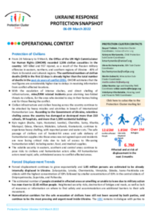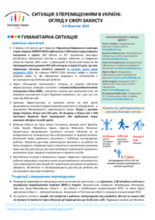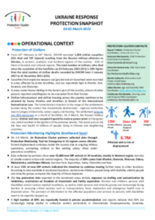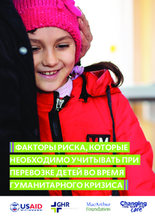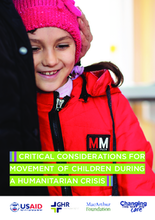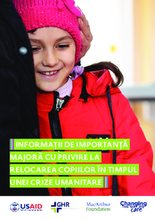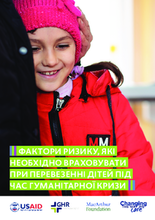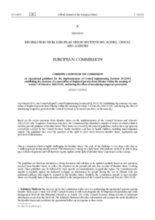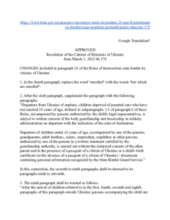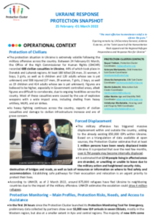Displaying 111 - 120 of 835
The Protection Cluster coordinates the protection response and advocates for the improvement of policies and legislation affecting conflict-affected people. It also engages in capacity building and provides guidance on mainstreaming protection into all humanitarian response activities. This is the Protection snapshot for Ukraine for the period 6 - 9 March 2022, compiled by Protection Cluster Ukraine.
Кластер захисту координує заходи захисту та виступає за вдосконалення політики та законодавства, що стосуються людей, які постраждали від конфлікту. Він також займається розбудовою потенціалу та надає рекомендації щодо включення захисту у всі заходи гуманітарного реагування. Це знімок захисту для України за період з 6 по 9 березня 2022 року, складений Protection Cluster Ukraine.
The Protection Cluster coordinates the protection response and advocates for the improvement of policies and legislation affecting conflict-affected people. It also engages in capacity building and provides guidance on mainstreaming protection into all humanitarian response activities. This is the Protection snapshot for Ukraine for the period 2 - 5 March 2022, compiled by Protection Cluster Ukraine. The Protection Cluster is led by UNHCR and includes Child Protection (led by UNICEF), GBV (led by UNFPA) and Mine Action (led by UNDP) Sub Clusters.
Данное руководство составлено для поставщиков услуг, которые работают с детьми, семьями и разлученными детьми в ответ на текущую гуманитарную ситуацию в Украине и в соседних странах.
This guidance has been compiled for service providers who are working with children, families, and separated children in response to the current humanitarian situation in Ukraine and surrounding countries.
Acest ghid a fost elaborat pentru furnizorii de servicii care lucrează cu copiii, familiile și copiii separați, în contextul situației umanitare actuale din Ucraina și din țările învecinate.
Цей документ створено для постачальників послуг, які працюють з дітьми, сім'ями та дітьми, що залишились без батьківської турботи, враховуючи поточну гуманітарну ситуацію в Україні та сусідніх країнах.
Communication from the Commission on Operational guidelines for the implementation of Council implementing Decision 2022/382 establishing the existence of a mass influx of displaced persons from Ukraine within the meaning of Article 5 of Directive 2001/55/EC, and having the effect of introducing temporary protection 2022/C 126 I/01.
The Cabinet of Ministers of Ukraine introduced a modification of item 24 of "Rules of crossing of the state border by citizens of Ukraine". This is an unofficial English Google Translation of the original document published in Ukrainian which is included on Page 2 of this document.
The Protection Cluster coordinates the protection response and advocates for the improvement of policies and legislation affecting conflict-affected people. It also engages in capacity building and provides guidance on mainstreaming protection into all humanitarian response activities. This is the protection snapshot for Ukraine for the period February 25 - March 1, 2022, compiled by Protection Cluster Ukraine.

